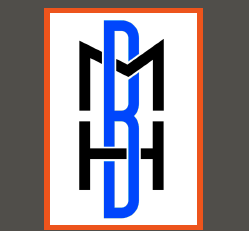
Parranda con Paranda
Dec 19, 2013 @ 8:00pm
A Puerto Rican and Garifuna Holiday concert. Featuring Hector “Pucho” Alamo (cuatro), Carlos Espada (lead vocals and percussion), Matthew Gonzalez (percussion), Jorge “Georgie” Vazquez (percussion), James Lovell (guitar and vocals), Delmo Nuñez (percussion and vocals), Julio Nuñez (percussion and vocals), Chester Nuñez (percussion and vocals), Lucy Blanco (vocals and maracas), Gianina “Scarlet” Nolberto (dance).
The Christmas season is a very festive time for Puerto Ricans on the mainland and the island. It officially begins on La Vispera de Navidad, or Nochebuena (Christmas Eve), climaxes on El Dia de los Tres Reyes or Epiphany on January 6th and ends with Octava , eight days after Epiphany. During this time groups of strolling musicians go from house to house on parrandas or trullas navideñas, sometimes called asaltos, as people join in to surprise and musically “assault” their family and friends, in what is basically the Puerto Rican version of Christmas caroling. It is customary to give food and drink to the parranderos who stop by one’s home. The aguinaldo, or Puerto Rican Christmas carol, has its origins in the Christmas carols called villancicos which were songs devoted to exalting the miracles of the Virgin Mary, in Spain.1 The principal characteristic of the aguinaldo is a four line (copla or quatrain), hexasyllabic (7-syllable) verse, or it can utilize the same 10- line structure as la decimal, which has octosyllabic lines. Puerto Rico has this unique hexasyllabic verse form. Supposedly the name, aguinaldo, comes from the fact that carolers used to receive a Spanish coin called an águila (eagle) as a gift for their songs2 so that is why aguinaldos have become synonymous with gifts. During the parranda there is an exchange of music and poetry for food and gifts. Though the villancicos remained popular in Spain, it is in Puerto Rico that the Spanish hexasyllabic meter really took root.3 Improvisatory singers, called trovadores, are accompanied by the cuatro, a ten-stringed mandolin-type instrument native to Puerto Rico, a guitar, bongos, and a scraped gourd called a guichero or güiro, and the musicians also serve as the chorus backing up the trovador.
Garifuna paranda is both a rhythm and a musical genre. The basic drum rhythm goes back to St. Vincent and further back to West Africa. Paranda itself became a genre in the 19th century soon after the Garifuna arrived in Honduras and were introduced to Spanish styles of music which incorporated the acoustic guitar. Paranda therefore has a touch of Spanish rhythms. Paranda is performed on guitar, Garifuna drums, shakers, and turtle shells. Only recently it has been possible to hear Garuifuna communities,. In 1995, Belize’s Stonetree Records started the Paranda Project with Andy Palacios and in 2000 released the first paranda album. Either way, parranda or paranda, they have similar roots. Some scholars think the roots of the word, “parranda,” come from the Arabic, “farbah” for “joyful celebration” which may also be the roots for the Portuguese, “farrabadó” for “noisy feast” or “uproar” and the Basque “farra/parra” which means “laugh” or “laughter.” So during this holiday season may you experience “noisy celebration” and “laughter.”
